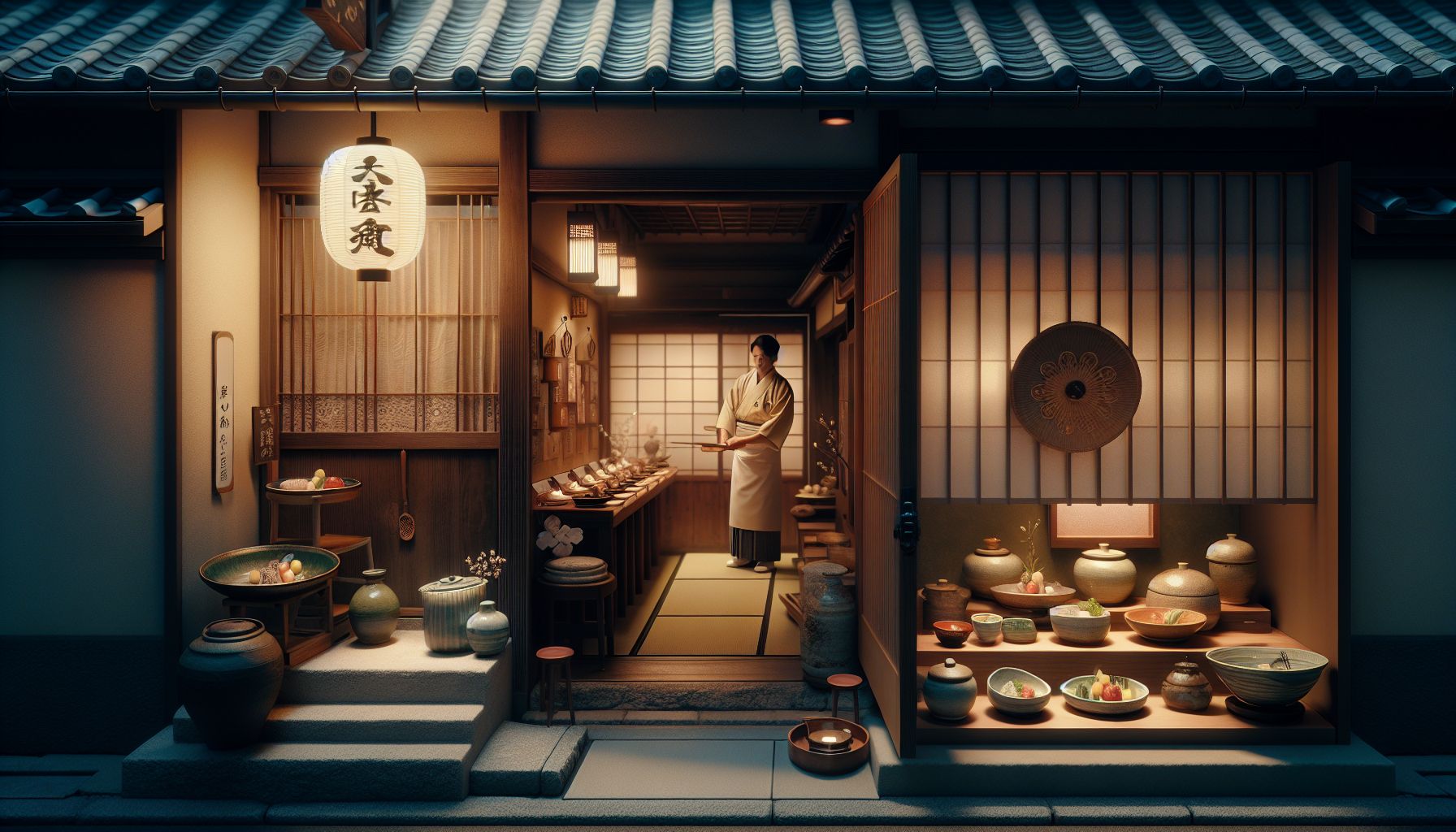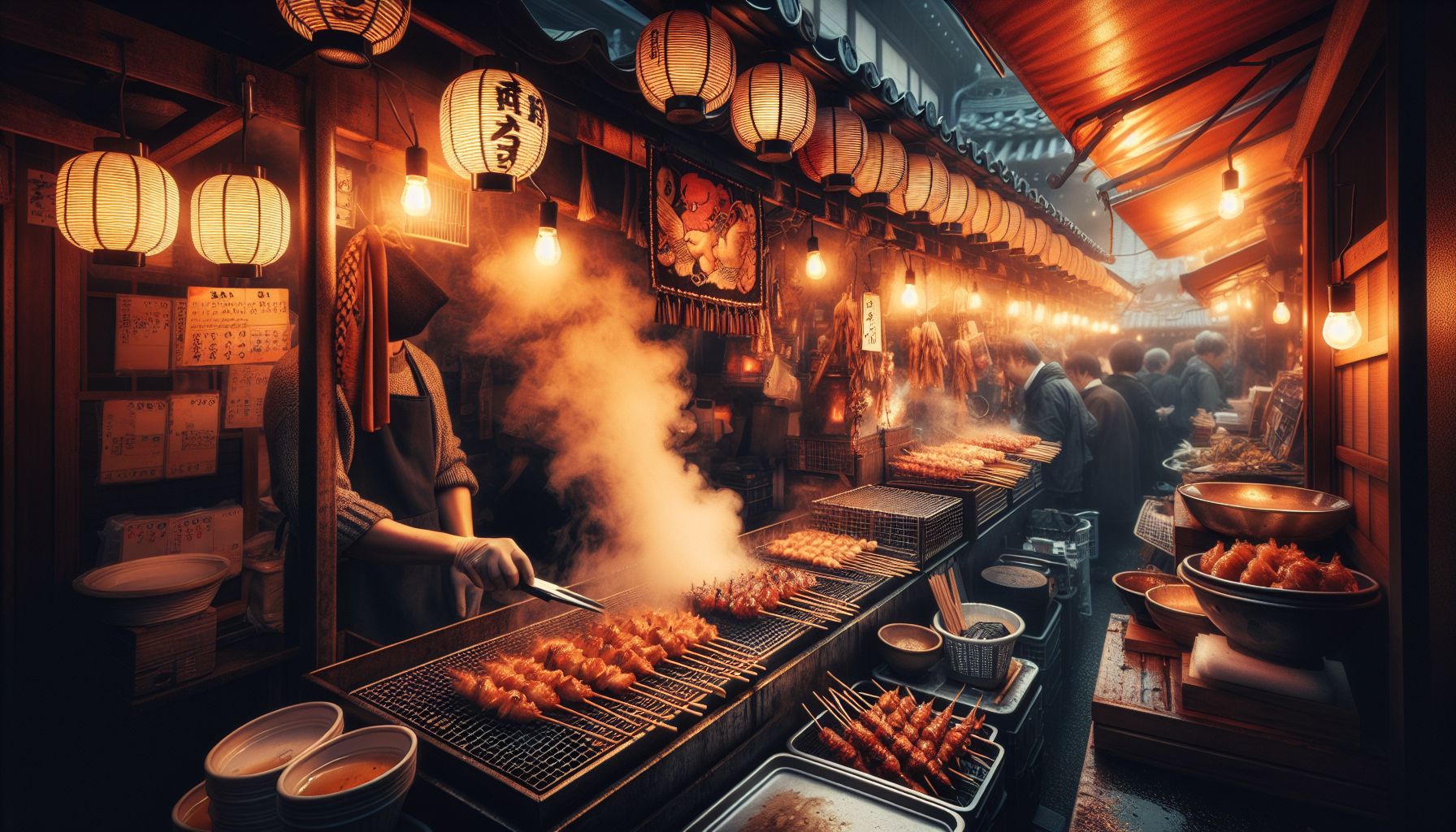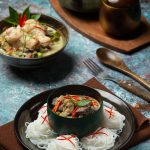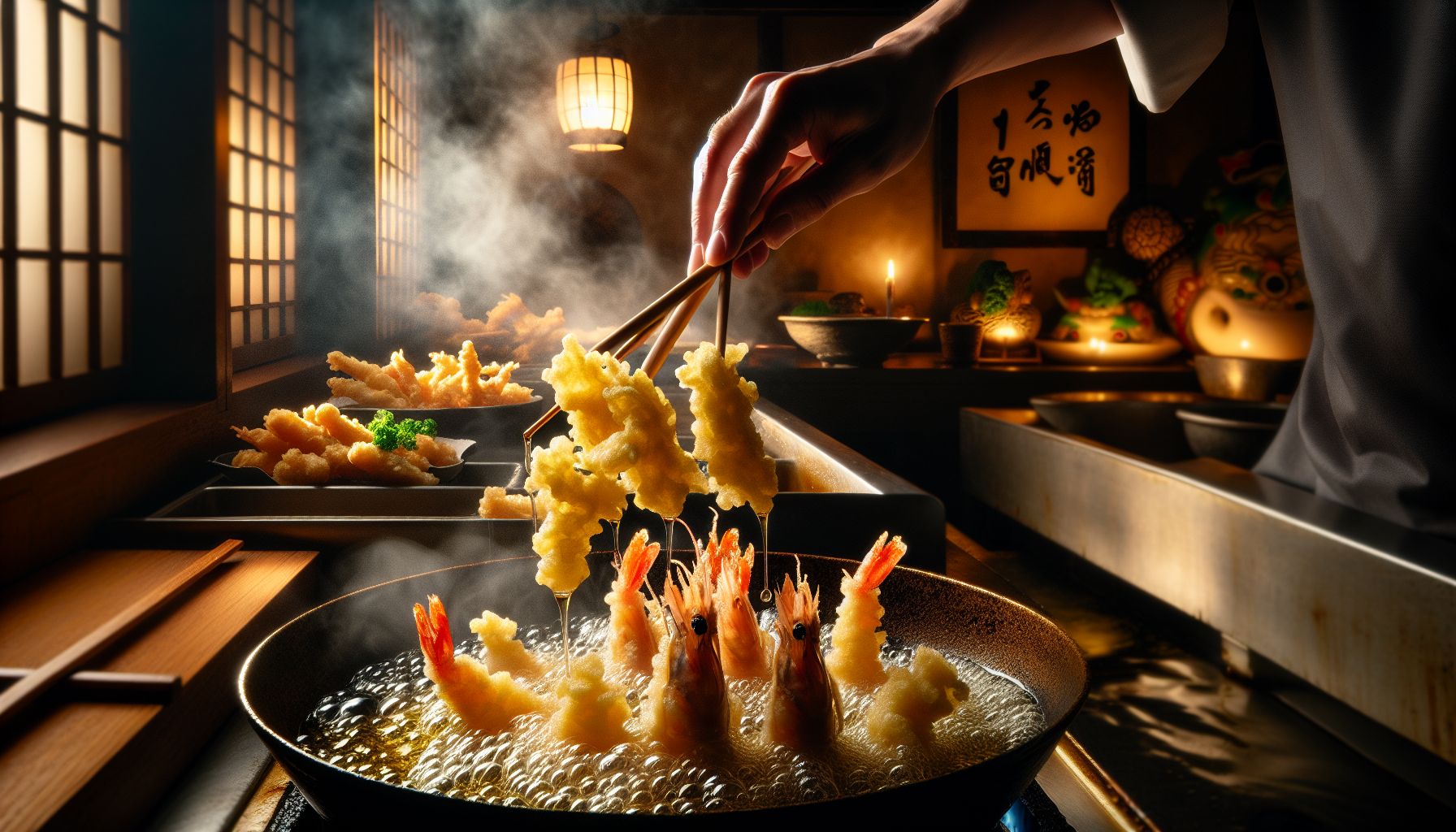Exploring the best food in Tokyo
When exploring Tokyo cuisine, there are several iconic dishes that embody the culinary spirit of the city. One such dish is **tempura**—lightly battered and fried seafood or vegetables, often served with dipping tentsuyu sauce and grated daikon radish. Tempura originated in Japan during the Edo period and has remained a staple of Tokyo restaurants for its delicate flavor and satisfying crunch. You can find exquisite tempura in dedicated tempura houses where the chef expertly fries each piece right in front of you.
Another must-try is **donburi**, a simple yet filling dish that showcases rice topped with various ingredients. One of the most popular versions in Tokyo is **Gyūdon**, a bowl of rice topped with savory beef and onions simmered in soy-based sauce. The combination of tender meat, perfectly seasoned rice, and an optional raw egg cracked on top strikes a balance between homely comfort and rich flavors. Donburi can be found all over the city, from humble fast-food outlets to specialized restaurants.
No journey through the best Japanese food would be complete without sampling **okonomiyaki**, a savory pancake made from flour, eggs, shredded cabbage, and a range of possible fillings—from pork belly to shrimp. “Okonomi” means “to one’s liking,” and this dish truly exemplifies its name as it’s highly customizable. Tokyo puts its unique spin on this Kansai-origin meal, known as **Monjayaki**, which is a more liquid form of okonomiyaki, giving it a slightly crispy yet gooey texture when cooked on the griddle.
For those with a sweet tooth, **wagashi**, traditional Japanese sweets, offer a delicate finale. Often served with tea, these small, seasonal confections like **daifuku** (mochi stuffed with sweet fillings) or **dango** (skewered rice dumplings) are an elegant representation of Japan’s refined dessert culture. Wagashi artisans in Tokyo take pride in crafting these sweets to be visually as well as gastronomically delightful.
Whether you’re sitting at a tempura counter or enjoying a casual donburi at a hole-in-the-wall eatery, these iconic dishes represent the heart of Tokyo cuisine and are essential experiences when sampling the city’s best Japanese food.
Best sushi and sashimi spots

When it comes to sushi and sashimi, Tokyo is an unmatched gastronomic paradise. The city is home to some of the world’s most renowned sushi restaurants, where precision, freshness, and simplicity come together to create an unforgettable dining experience. A visit to **Sukiyabashi Jiro** offers an iconic sushi experience. Helmed by chef Jiro Ono, this Michelin-starred establishment is world-famous for its near-spiritual dedication to quality and tradition. Each piece of sushi is prepared with meticulous care and served one by one at the counter, allowing you to revel in the fine balance of rice, vinegar, and impeccably fresh fish. Be prepared, however—reservations here are notoriously hard to come by, and the meal, while brief, is unforgettable.
For a more relaxed but still authentic sushi experience, head to **Sushidai** at the Toyosu Fish Market, the successor to the historic Tsukiji Market. Long lines here indicate the popularity of this casual eatery, where visitors can enjoy sushi crafted from just-landed fish. It’s not unusual to wait several hours in line, but the result is undeniably some of Tokyo’s freshest sushi—rich flavors of tuna, melt-in-your-mouth sea urchin, and delicate flounder, all served with seasoned rice perfected by decades of expertise. Eating here allows you to experience the vibrant energy of Toyosu Market, the nerve center of Tokyo’s seafood trade.
For those searching for sashimi, **Sushi Saito** is another institution worth seeking out. While it includes sushi as part of its offering, the thinly sliced raw fish served here as sashimi truly lets the natural flavor of the seafood shine. Tokyo restaurants such as this share a common dedication to ingredient freshness. Every fish and shellfish is treated with the utmost care—from perfectly timed aging to precise, paper-thin cuts, creating a dish that highlights the purity of each bite.
If you are hoping for a more modern take on Tokyo’s sushi scene, consider dining at **Kyubey**, located in the opulent district of Ginza. Kyubey is known for being innovative while still deeply respecting tradition. Here, sushi chefs play with seasonal ingredients and contemporary techniques to offer a refined yet approachable omakase experience. Not only is the seafood top-notch, but the service is highly personal—you may even find yourself learning about each fish used as you chat with the master chef.
Lastly, don’t overlook more affordable options like **Uobei** for an entirely different dining atmosphere. At Uobei, sushi is delivered via a high-tech conveyor belt system straight from the chef to your table. While it’s a more budget-friendly spot compared to the elite sushi counters, Uobei still offers high-quality ingredients and the kind of efficient service that Tokyo is known for. It’s also a great option for those seeking more casual dining without sacrificing the quality of sushi and sashimi that Tokyo cuisine is famous for.
Wherever you choose to go, Tokyo’s sushi and sashimi culture represents some of the best Japanese food you’ll ever encounter, whether you’re sitting in a humble sushi-ya or a Michelin-starred restaurant. The mastery behind the craft of sushi-making in Tokyo is unparalleled, and no serious food lover should miss the opportunity to indulge in these exquisite dishes.
Authentic ramen joints
Tokyo is a haven for ramen lovers, where passion and craft combine to produce some of the most delectable bowls of noodles you’ll ever encounter. The city is home to an impressive variety of ramen styles, each bringing its own unique flair to this popular dish. The key ingredients—broth, noodles, and toppings—blend harmoniously to create layers of complex flavors, and each ramen shop in Tokyo is dedicated to its own technique, honed over years of perfecting the art.
For a slice of ramen heaven, head to **Ramen Street** in Tokyo Station, where some of the city’s best shops are located, offering a variety of ramen types under one roof. Here, you’ll find **Rokurinsha**, famous for its rich, thick **tsukemen** (dipping noodles), where noodles are served separately, and you dip each bite into a deeply flavorful pork or fish-based broth. The broth has a velvety umami intensity, perfectly balanced by the texture of the noodles, making it an unforgettable experience for noodle enthusiasts.
Alternatively, a visit to **Ichiran** may be in order for those who prefer privacy and customization in their ramen experience. Ichiran specializes in **tonkotsu ramen**, a smooth, creamy pork bone broth with thin noodles. A unique feature of Ichiran is the individualized eating booths, where you can focus entirely on your meal with minimal interaction. This allows diners to truly savor every aspect of the ramen, from the richness of the broth to the spice level, which can be adjusted to your preference. It’s a quintessential experience for anyone wanting to dive deep into the nuances of Tokyo’s ramen offerings.
If you’re looking to enjoy a more local favorite, venture to **Afuri**, famous for its **yuzu-shio ramen**. Shio ramen stands out with its lighter, salt-based broth infused with a hint of yuzu citrus, making it a refreshing alternative to the heavier, meaty varieties. The combination of tender chicken, perfectly cooked noodles, and subtle yuzu fragrance makes Afuri’s ramen distinctive and ideal for those who prefer a delicate balance of flavors. It’s the kind of comforting bowl that highlights the sophisticated side of Tokyo cuisine.
Another spot that has earned a devoted following is **Mutekiya** in Ikebukuro. Known for its incredibly rich **tonkotsu** broth, Mutekiya’s ramen features thick noodles and an abundance of tender, slow-braised pork belly. The hearty meal is topped with garlic and greens, adding layers of flavor and complexity that food lovers appreciate. **Tokusei Ramen**, their flagship dish, is deeply satisfying and can turn a quick bowl of noodles into a sacred culinary experience. Here, queues are commonplace, but the soulful, heartwarming broth makes the wait worthwhile.
For a more modern twist on traditional ramen, try **Menya Musashi**. Its bold, creative approach can be seen in their thick, chewy noodles and flavor-packed broths ranging from soy sauce to miso. This ramen joint puts an artistic spin on the classics without straying too far from what makes ramen such an iconic Japanese dish. Menya Musashi uses a combination of pork, chicken, and seafood to build layered broths, which highlight the chefs’ inventive methods and commitment to delivering some of the best Japanese food Tokyo restaurants have to offer.
Whether you’re indulging in the creamy richness of tonkotsu, the refreshing lightness of yuzu shio, or hearty tsukemen, the ramen in Tokyo leaves an indelible mark on your taste buds. These shops showcase the wide range of flavors and textures that make ramen such a beloved dish not just in Japan, but globally. Exploring Tokyo’s ramen scene is an essential part of uncovering the richness of the city’s food culture, a true testament to the character of Tokyo cuisine.
Hidden gems in local neighborhoods

Away from the hustle of tourist-heavy districts, Tokyo’s lesser-known neighborhoods are home to some hidden gems that capture the essence of authentic dining in the city. These local spots are where you’ll find Tokyo cuisine being celebrated in its purest form, often among modest streets lined with unassuming eateries that offer unforgettable meals.
One such hidden treasure is **Kagurazaka**, a charming neighborhood known for its rich history and eclectic mix of French and Japanese influences. Kagurazaka is a refuge for those seeking traditional Japanese restaurants nestled alongside French-inspired patisseries and cafés. For an intimate dining experience, visit **Ishikawa**, a Michelin-starred kaiseki restaurant tucked into a quiet alleyway. Kaiseki is Japan’s answer to haute cuisine, offering a multi-course meal that emphasizes seasonal ingredients. At Ishikawa, each dish is a work of art, beautifully presented on intricate ceramic dishes, with flavors that balance delicacy and complexity. Personal attention from the chef and small, dimly lit rooms create a quiet, refined atmosphere that feels worlds away from Tokyo’s bustling center.
For those who venture further into the city’s residential areas, there’s **Yanaka**, a quaint part of Tokyo that brings you back to the nostalgic atmosphere of the old city. Yanaka boasts family-run establishments that don’t commonly appear in travel guides but offer some of the best Japanese food the city has to offer. One spot you shouldn’t miss is **Kayaba Coffee**, a café that has been operating since 1938, serving classical, no-frills dishes like omurice (omelet over rice) and toast sets paired with hand-brewed coffee. It’s not only a fantastic way to savor Tokyo’s old-school comfort food but also a look into the daily lives of local residents.
Another hidden gem can be found in **Koenji**, where the vibrant underground culture meets street-level dining. Known for its bohemian vibe and second-hand clothing stores, Koenji is a foodies’ paradise boasting a collection of yakitori joints, ramen shops, and izakayas (Japanese pubs). Among these is **Birdland**, a Michelin-starred yakitori restaurant that elevates charcoal-grilled chicken skewers to new heights. Each skewer from Birdland is perfectly grilled, with a smoky, savory flavor, and accompanied by simple yet exquisite sides that enhance the natural deliciousness of the chicken. Whether you’re perched at the counter or sitting intimately with a group, the communal energy of dining here is part of what makes Koenji so appealing.
Navigating Shitamachi, the area encompassing districts such as Asakusa and Ueno, offers an even more down-to-earth experience. In the backstreets of **Asakusa**, you’ll stumble across small, family-run restaurants offering classic Tokyo cuisine in its most unpretentious form. One such eatery is **Jimbocho Den**, a cozy bistro specializing in fusion Japanese comfort food. Dishes like hearty beef stew with rice or a daily special of freshly prepared sashimi make this a neighborhood favorite. The relaxed atmosphere and the owner’s personal touch in preparing and serving the food distinguish this restaurant from the polished high-end eateries scattered across the city.
Finally, food connoisseurs seeking a truly off-the-beaten-path experience should explore **Kichijoji**, a neighborhood often ranked as one of the best places to live in Tokyo. Kichijoji’s blend of nature, local flavors, and creative flair makes it a hotspot for Tokyo restaurants that offer something a little different. One of those places is **Harmonica Yokocho**, a tiny labyrinth of alleys teeming with izakayas and food stalls. Here, you can grab a yakitori skewer, sip sake at cozy, standing-room-only bars, or savor bowls of umami-rich ramen while rubbing shoulders with locals. The energy of this night market is infectious, with each corner offering new and unique flavors to discover.
Exploring these lesser-known enclaves of the city will give you a newfound appreciation for the diversity of Tokyo cuisine. Whether you’re tucking into a masterfully grilled skewer in Koenji or enjoying a serene kaiseki meal in Kagurazaka, these hidden gems offer some of the best Japanese food you’ll find in Tokyo restaurants. The quiet charm of these local neighborhoods is where you’ll encounter food that sustains the soul, far away from the crowds yet at the heart of what makes eating in Tokyo such a magical experience.
Street food and popular markets

No culinary exploration of Tokyo would be complete without indulging in its vibrant street food scene and visiting the city’s bustling markets. Walking through Tokyo’s streets, you’ll find an array of food stalls offering everything from savory snacks to sweet delights, perfect for grabbing a quick bite as you explore. These street food offerings not only highlight the best Japanese food traditions but also showcase the creativity of local chefs in transforming simple ingredients into unforgettable flavors.
One destination that perfectly encapsulates this mix of food and atmosphere is **Ameya-Yokochō Market** in Ueno. Originally a post-war black market, this lively open-air street now serves as a haven for food lovers. Here, you can sample **yakitori**, skewered and perfectly grilled chicken with a smoky, savory flavor that embodies Tokyo cuisine’s mastery of simple but bold ingredients. Another street food staple you’ll find is **takoyaki**, bite-sized balls of dough filled with pieces of octopus, ginger, and green onions. They are cooked to a crisp outside while remaining gooey on the inside, then topped with sweet-savory sauce, bonito flakes, and mayonnaise for an extra kick.
Another must-visit for street food lovers is the **Tsukiji Outer Market**. While the famous inner wholesale market moved to Toyosu, this outer section remains a bustling hub packed with food stalls and small eateries focused on fresh seafood. Here, you can grab sushi or sashimi prepared on the spot, but the real gems lie in the quick bites like **uni ikura donburi**—a rice bowl topped with sea urchin and salmon roe. The fresh, briny flavors in each spoonful capture the essence of Tokyo’s rich seafood culture. You can also try locally grilled fish, tempura, and crispy **senbei** crackers made from rice, all of which celebrate the diversity of Tokyo cuisine in quick, easy-to-eat forms.
Another area popular among food enthusiasts is **Nakamise Street**, located in Asakusa near the famous Sensō-ji Temple. As you walk through this historic shopping street, you’ll find vendors selling sweet and savory treats positioned between stalls of traditional crafts. Snack options include **taiyaki**, a fish-shaped pastry typically filled with sweet red bean paste, though modern versions come with custard, chocolate, or matcha fillings. You’ll also come across **kibidango**, soft and chewy rice dumplings coated in sweet kinako (roasted soybean flour), which offer a nostalgic nod to Japanese street food roots.
For a taste of fusion street food, head to **Harajuku’s Takeshita Street**, where sweet lovers will find oversized, fluffy **cotton candy** and Instagram-worthy **crepes** that are stuffed with everything from fresh fruit and whipped cream to chocolate and cheesecake. Although these treats are more modern adaptations, they’ve become synonymous with Tokyo’s street snack culture. You can also find little stands selling **kare pan** (fried curry bread), which pairs the savory depth of Japanese-style curry with a crisp, golden-brown exterior.
If you’re looking for a more traditional street food market, make a stop at **Sendagi Yanaka Ginza**, a charming shopping street in the old-town neighborhood of Yanaka. Here, the focus is on retro food stalls offering simple yet satisfying bites like **menchi katsu**, a breaded and fried ground meat patty, or crispy **karage** fried chicken. These timeless dishes tend to be local favorites, and their comforting flavors reflect the spirit of down-to-earth Tokyo restaurants.
Tokyo is also home to several seasonal food markets and festivals, where you can sample **yakisoba** (stir-fried noodles with vegetables and meat), **okonomiyaki** (savory pancakes filled with a variety of ingredients), and even **agemochi** (fried mochi rice cakes). These foods are often served at matsuri (Japanese festivals), adding a festive air to your culinary adventure. These festivals also give locals and tourists alike an opportunity to experience the casual side of Tokyo cuisine, away from the more upscale dining experiences.
Whether you’re seeking seafood on the go, savory skewers, or sweet treats, Tokyo’s street food and market culture provide an engaging and flavorful way to experience the city’s culinary landscape. Every bite offers an insight into the best Japanese food, drawing you deeper into the unique world of Tokyo cuisine that thrives in even the most unassuming alleys and stalls scattered throughout the metropolis.







